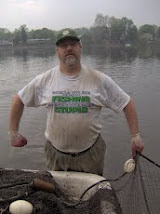This
is not a military blog, but as the 100 year anniversary of the conflagration of
the Great War approaches, Team VFH has thought to honor our fallen heroes with
visits to the area’s WWI memorials. In an earlier entry we introduced you to
the ubiquitous E.M. Viquesney statue, “Spirit of the America Doughboy”. It was
produced in great quantities by the Indiana sculptor and roughly 300 were
erected across the United States. There are approximately 140 still standing in
various locales like town squares or parks and the relatively small state of New
Jersey can boast it has eight. The
statue is of an American Doughboy striding forward into “No-Man’s-Land”,
holding a grenade in his right hand above his head. It is estimated by some
historians and researchers that of all the WWI memorials erected 10% feature
the Viquesney Doughboy.
To
find statues in your area a good source is this database.
“Doughboy”
is the nickname given the American Expeditionary Forces that flooded Europe
when this country entered the war in 1917. There are many theories over the origin of the moniker. One comes from the Mexican-American War of 1916 when the dusty infantry were called "Adobes" by the cavalry, but the somewhat derisive nickname became very popular. If you are interested in reading further about the Doughboys and the AEF, here is a good website,
HISTORY OF THE AMERICAN DOUGHBOY
HISTORY OF THE AMERICAN DOUGHBOY
New
Jersey played a very important role in the war effort. Over 150,000 soldiers from NJ
served in WWI and over 3,800 paid the ultimate sacrifice. Camp Merritt in Cresskill,
NJ was a staging area for much of the AEF who were then deployed to Hoboken before
being shipped overseas. Around 4 million soldiers passed through Camp Merritt
during the war. NJ also contributed to the war through weapons materiel and
shipbuilding.
Okay,
so perhaps only history buffs would be so inclined to visit these and similar
memorials, although given the upcoming anniversary of the “War to End All Wars,”
one should pay homage to our heroes. Understandably, endeavoring to trek to the
towns that have a “Spirit” statue (and at least one that is similar, but NOT a Viquesney, in Verona) just to see the memorial may not be on the top of your list of things
to do, but VFH has decided to sweeten the pot and lure you with things to do in
or near these particular towns. Readers of this blog will know that we shall focus on places to eat and have a drink. Hopefully after following our antics, you too will be so inclined to take a road trip and amble through some New
Jersey towns to see their Jersey Doughboys. Perhaps you will be inspired to search for "Spirit" memorials in your own neck of the woods. Remember the database is a good resource, and even the Smithsonian has a listing of known Viquesney statues to help you in your search.
Again, there are eight "Spirit of the American Doughboy" statues in New Jersey. They are in Belmar, Dover, Fair Haven,
Frenchtown, Matawan, Perth Amboy, Roselle Park and Secaucus. We shall visit each one and report on our visit.
Our first stop will be Secaucus!


































